- Home
- Graham Hancock
Magicians of the Gods: The Forgotten Wisdom of Earth's Lost Civilization Page 6
Magicians of the Gods: The Forgotten Wisdom of Earth's Lost Civilization Read online
Page 6
Such ideas, which had acquired the status of an unchallengeable truth by Bretz’s day, had themselves arisen from the necessary—indeed essential—overthrow of the old religious belief in creationism and the notion that God whimsically intervened in the earth’s history by ordaining cataclysms such as the Biblical Flood. In righteous opposition to these thoughts of supernatural creation and destruction, uniformitarianism seemed a profoundly rational response that saw only the forces of nature at work upon the earth over periods of millions, or indeed billions of years.
Mountains had not been built overnight, but had risen slowly, imperceptibly over time. Likewise had fantastic geological features such as the Grand Canyon been eroded by the flow of rivers over many millions of years.27
Bretz was an eminently rational man, and certainly no religious dogmatist, yet, as his biographer John Soennichsen notes, “while hiking through the hot, dry, ragged world of the Scablands, everything he had seen pointed not to a slow, uniform change over time but to a catastrophe, a sudden release of colossal quantities of water that had quickly washed away the loessial topsoil and then carved deeply into the basalt rock beneath.”28
The problem was—where had all this water come from? It was well understood that at the margin of the North American ice sheets there must have been some melting—as one indeed sees at the edges of all glaciers today. But such melting could hardly explain the magnitude of the erosive changes that were visible in the field. As Bretz noted in his 1923 paper:
The writer confesses that during ten weeks of study of the region, each newly examined scabland tract reawakened a feeling of amazement that such huge streams could take origin from such small marginal tracts of an ice sheet, or that such an enormous amount of erosion, despite high gradients, could have resulted in the very brief times these streams existed. Not River Warren, nor the Chicago outlet, not the Mowhawk channel, nor even Niagara Falls and Gorge itself approach the proportions of some of these scabland tracts and their canyons. From one of these canyons alone [Upper Grand Coulee] 10 cubic miles of basalt was eroded by its glacial stream.29
Concluding the paper, and moving toward the profoundly heretical and anti-uniformitarian idea that would soon get him into a great deal of trouble, namely that a single cataclysmic flood unleashed in a very short period had been responsible for all the devastation he had witnessed, Bretz wrote:
Fully 3,000 square miles of the Columbia plateau were swept by the glacial flood, and the loess and silt cover removed. More than 2,000 square miles of this area were left as bare, eroded, rock-cut channel floors, now the Scablands, and nearly 1,000 square miles carry gravel deposits derived from the eroded basalt. It was a debacle which swept the Columbia Plateau.30
In other words, as Bretz’s biographer summarizes, the geologist now believed that the features he had documented “could only have been created by a flood of unimaginable proportions, possibly the largest flood in the history of the world.”31
The reaction of the geological establishment was one of stunned, embarrassed silence. To have strayed so far from the doctrine of uniformitarianism could only mean that Bretz must have gone mad. David Alt, Professor Emeritus of Geology at the University of Montana, describes one of the lectures that Bretz gave in which he expounded on the ideas in his 1923 paper:
The geologists … were aghast in the same way that a roomful of physicists would be upon hearing a colleague explain how he had made a perpetual motion machine out of old popsicle sticks. Physicists had all learned very early of the futility of perpetual motion machines, and no properly educated geologist was supposed to traffic in catastrophes of any sort.32
Alt describes an old professor of his own undergraduate days who had been a student sitting in the audience when Bretz read his 1923 paper. It seems the professor did a hilarious impersonation of Bretz “pounding on the podium with both fists and stomping on the floor as he used vivid language and gestures to convey his idea of a catastrophic flood to his horrified audience.”33
Quite apart from the theatricals, the geologists were shocked to hear Bretz invoke:
a sudden catastrophe to explain the Scablands of eastern Washington. In their view this was a reversion to the unscientific thinking of some 125 years before. To this day, most geologists consider it nothing less than heresy to invoke a catastrophic explanation for a geologic event. So Bretz stepped off the edge of a very long limb when he suggested that a great flood had eroded the Scablands … [It made] him a pariah among geologists, an outcast from the politer precincts of society.34
The outcast did not give up, however. On the contrary, he doggedly continued with his research, bringing down ever more controversy on his head in the process but believing that facts, ultimately, would vindicate him.
The crunch came on January 12, 1927 when Bretz was ambushed by a lynch mob of his colleagues at a lecture he’d been invited to give to the Geological Society of Washington in the Cosmos Club, Washington DC. Bretz was by now calling “his” flood the “Spokane Flood” (after the town of Spokane) and liked to refer to the ice sheet from which it had emerged as the “Spokane ice sheet” (neither term is used today but Bretz’s Spokane ice sheet was, effectively, the southern part of that great late Pleistocene ice sheet now known as the “Cordilleran”). He believed that large parts of it must have melted with extraordinary rapidity, because “the volume of water was very great, almost incredibly great … In spite of high gradients to draw it off, the pre-existing valleys first entered were inadequate to carry it all, and the flood spread widely in a complicated group of anastomosing routes.”35
Figure 14: North America during the Ice Age.
W.C. Alden, then the Chief of Pleistocene Geology with the profoundly conservative US Geological Survey, objected to “the idea that all the channels must have been developed simultaneously in a very short time” and took great offense at “the tremendous amount of water” postulated by Bretz.36 “It seems to me impossible,” Alden protested, “that such part of the great ice fields as would have drained across the Columbia Plateau could, under any conditions, have yielded so much water as is called for in so short a time.”37 He admitted that he had never visited the Scablands himself but felt sure that a uniformitarian explanation was what was required: “The problem would be easier if longer time and repeated floods could be allotted to do the work.”38
James Gilluly, well known as an apostle of geologic gradualism, dismissed the notion of a single cataclysmic flood with words like “preposterous,” “incompetent,” and “wholly inadequate.”39 He found nothing in Bretz’s evidence to exclude his own preferred solution, namely that multiple smaller floods had been involved and that these would have been “of the order of magnitude of the present Columbia’s, or at most a few times as large.”40
Likewise G.R. Mansfield doubted that “so much work could be done on basalt in so short a time … The Scablands seem to me better explained as the effects of persistent ponding and overflow of marginal glacial waters, which changed their position or their places of outlet from time to time through a somewhat protracted period.”41
O.E. Meinzer was obliged to confess that “the erosion features of the region are large and bizarre” but he, too, preferred a gradualist explanation: “Before a theory that requires a seemingly impossible quantity of water is fully accepted, every effort should be made to account for the existing features without employing so violent an assumption … I believe the existing features can be explained by assuming normal stream work of the ancient Columbia River…”42
In summary, not a single voice was raised in support of Bretz and there was much patronizing dismissal of his “outrageous hypothesis” of a single large flood. In particular, the massed geologists homed in on what they clearly believed was the fatal flaw in the case for a sudden and overwhelming cataclysm—namely that Bretz had failed to identify a convincing source for his floodwaters.
Bretz replied that he saw no logic in this, since lack of a documented source for the floo
d did not prove that there had been no flood. “I believe that my interpretation of Channeled Scabland should stand or fail on the scabland phenomena themselves,” he argued.43 He was, he said, as sensitive as anyone else to adverse criticism, and had “no desire to invite attention simply by advocating extremely novel views.” Moreover, he himself had repeatedly been driven to doubt “the verity of the Spokane Flood,”44 only to be forced “by reconsideration of the field evidence, to use again the conception of enormous volume … These remarkable records of running water on the Columbia Plateau, and in the valleys of the Snake and Columbia Rivers, cannot be interpreted in terms of ordinary river action and ordinary valley development … Enormous volume, existing for a very short time, alone will account for their existence.”45
It was this accumulation of compelling field evidence that Bretz asked to be considered—not by emotion, not by intuition, not by reference to received wisdom, but only by “the established principles of the scientific method.”46 “Ideas without precedent,” he was to write later:
are generally looked on with disfavor and men are shocked if their conceptions of an orderly world are challenged. A hypothesis earnestly defended begets emotional reaction which may cloud the protagonist’s view, but if such hypotheses outrage prevailing modes of thought the view of antagonists may also become fogged.
On the other hand, geology is plagued with extravagant ideas which spring from faulty observation and misinterpretation. They are worse than “outrageous hypotheses,” for they lead nowhere. The writer’s Spokane Flood hypothesis may belong to the latter class, but it cannot be placed there unless errors of observation and direct inference are demonstrated.47
And this was the problem with all the criticisms of Bretz both before and after the Washington meeting. The geological establishment did not like what he had to say, it flew in the face of their gradualist reference frame, and they regarded it as a “heresy that must be gently but firmly stamped out.”48 In the final analysis, however, they could not disprove his science, only disapprove of it, which is a very different thing.
The heart of the matter remained Bretz’s assertion that the ice cap had melted precipitously and his inability to propose a mechanism that could have brought about such melting. He himself, as noted, did not regard this as a significant stumbling block, but his critics did. Over the years, therefore, in attempts to appease them, he several times reluctantly proposed two possible solutions. These were some sort of radical, short-lived climate change on the one hand, or, on the other, an episode of volcanic activity beneath the ice cap. He admitted of the former, however, that “no such climatic change is recorded elsewhere, and the rapidity demanded seems impossible,” while of the latter, he observed that “nothing has been found in the literature to suggest Pleistocene volcanism in the area which was drained across the Columbia Plateau.”49
Interestingly, by the time Bretz faced his hostile peers in Washington he was already aware of—but had dismissed—the very explanation for cataclysmic flooding that would much later be taken up by the geological establishment and open the door to the universal acceptance of his evidence that prevails today. In his outline for his January 1927 presentation he wrote: “Both Mr. Alden and Mr. Pardee have suggested that I consider the sudden draining of a glacial lake to account for the flood … Mr. Pardee [in a 1925 letter to Bretz] specifies Lake Missoula, which is the only one of any magnitude known in the region that might have functioned.”50
Eventually, in the 1940s, Bretz would indeed embrace a sudden draining of Glacial Lake Missoula as the source for his flood but the reason why he did not do so in 1927 is important and, as we shall see, of the greatest relevance to the evolving debate about what exactly happened in North America at the end of the Ice Age. In brief Bretz’s view in 1927, as his biographer explains, was that the volume of Lake Missoula “might not have been adequate to form the Scablands. ‘Twould run the flood for only 2 weeks,’ reads a handwritten comment by Bretz in this section of his outline.”51
In March 1930, Bretz published a brief abstract in the Bulletin of the Geological Society of America. The abstract was titled “Lake Missoula and the Spokane Flood.” In it Bretz wrote that this lake had first been named and described by the geologist J.T. Pardee (whose letter on the subject he’d received in 1925), that it stood more than 4,000 feet above sea level and that it was at least 2,100 feet deep. Without going into any detail he noted that the lake had been held in place by an ice dam and that “seventy miles to the southwest, along the western arm of Purcell Trench and Spokane Valley, are the easternmost heads of the scabland channels. If a bursting of the dam occurred, water could escape only along this seventy-mile stretch.”52
By 1932 Bretz had warmed further to the idea that Lake Missoula could be the culprit behind his flood, although he felt that issues concerning the hypothetical ice dam and its proposed cataclysmic failure remained to be worked out.53 At this point in his life, however, he seemed ready to move on and was to devote most of the next decade to other, completely different, geological puzzles. Then, in 1940, he was invited to speak on his Scablands theory at a meeting of the American Association for the Advancement of Science being held in Seattle. He declined the invitation, saying that his views and evidence were already in print, but the event turned out to be a seminal one. J.T. Pardee was there and presented a paper on his work on Glacial Lake Missoula, making public for the first time his long-held conclusion that there had been a failure of an ice dam and that “the entire lake had drained catastrophically and, most likely, quite dramatically.”54
Figure 15
Curiously Pardee did not connect his Missoula findings to Bretz’s own long-standing and well-known case about the creation of the Channeled Scablands by a catastrophic flood, but much later, Bretz would write: “He never said, at least in print, anything about the final deposition of this vigorous discharge. I do believe, however, that he was generously leaving that to me.”55
In the process of making the most of what had been left to him, Bretz abandoned his single cataclysmic flood model in favor of one more palatable to his opponents. “There were several floods,” he was eventually to write (in 1959). “The theory is elastic enough to take care of that.”56 In the same year, Bretz was presented with the Neil Milner Award in honor of his exceptional contributions to Earth Sciences.57
A few years later, in 1965, Bretz’s transformation from pariah to poster boy seemed complete. The International Union for Quaternary Research organized a field trip to the Columbia Plateau for many former critics of the catastrophic flood theory. The group traversed the full length of Grand Coulee, part of the Quincy Basin, and much of the Palouse-Snake scabland divide. At the end of the trip the participants, humbled by what they had seen, and satisfied as to the source of the flood-damage in Glacial Lake Missoula, sent Bretz a telegram of greetings and salutations. The telegram closed with the words: “We are all now catastrophists.”58
“Be assured,” wrote Bretz, “that after 30 years, and 30 papers in self-defense, and more than 30 people who vigorously denied my theory, it did my heart good like medicine.”59
The final accolade came in 1979 when Bretz, by then aged 96, received the Penrose Medal, the Geological Society of America’s highest accolade. After this award, he told his son: “All my enemies are dead, so I have no one to gloat over.”60
Bretz went on to his next great adventure, aged 98 years, on February 3, 1981.
Gradualism draws the teeth of Bretz’s cataclysm
So … all seemed well. The evidence of a land scoured by cataclysmic deluge could not be denied. The timing had been set—perhaps not precisely, but at any rate somewhere in the last millennia of the Ice Age between 15,000 and 11,000 years ago. The source of the deluge had been tracked down to Glacial Lake Missoula. And the crunch-point of whether there had been just one gigantic flood—which Bretz’s honed instincts as a field geologist had originally suggested—or multiple floods, as his gradualist colleagues preferred, had
been conceded with reference to the elasticity of his theory and an allowance of “several” floods.
It becomes clear in later papers published by Bretz that he was willing to accept that up to eight floods had occurred.61 This was, undoubtedly, a concession to gradualism—eight smaller floods politely spread out over a period of some thousands of years being more palatable to those of a uniformitarian persuasion (i.e. to most geologists, then and now) than a single humongous event of great violence that occurred suddenly, did massive damage, and was over and done with in about three months. Nonetheless Bretz remained a catastrophist at heart. Victor R. Baker of the Department of Hydrology and Water Resources at the University of Arizona notes in his study, The Spokane Flood Debates, that while Bretz did indeed extensively modify his original hypothesis,
there was a lingering suspicion that one was dealing with an unusual exception to a general rule. Bretz himself had claimed: “The unique assemblage of forms … described … as the Channeled Scabland … records a unique episode in Pleistocene history … Special causes seem clearly indicated.”62
In other words, regardless of any concessions, what is referred to here are causes that were still unique and special enough to be described as catastrophic and that did not undermine the conclusion that “it was a debacle which swept the Columbia plateau.”63 It is surely significant that in his last published work, a note he wrote to the Geological Society of America in 1979 accepting its highest accolade, the Penrose Medal, that Bretz took the opportunity to drive this point home. “Perhaps,” he wrote:

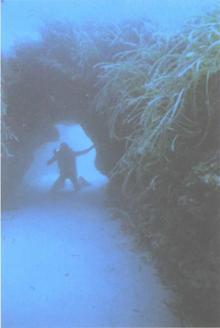 Underworld: The Mysterious Origins of Civilization
Underworld: The Mysterious Origins of Civilization The Master Game: Unmasking the Secret Rulers of the World
The Master Game: Unmasking the Secret Rulers of the World America Before
America Before Entangled
Entangled War God: Nights of the Witch
War God: Nights of the Witch War God: Return of the Plumed Serpent
War God: Return of the Plumed Serpent The Message of the Sphinx AKA Keeper of Genesis
The Message of the Sphinx AKA Keeper of Genesis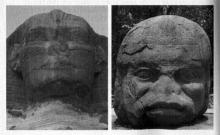 Fingerprints of the Gods
Fingerprints of the Gods The Sign and the Seal
The Sign and the Seal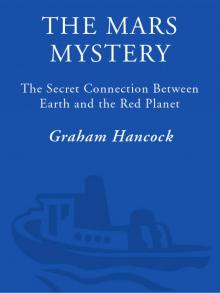 The Mars Mystery: The Secret Connection Between Earth and the Red Planet
The Mars Mystery: The Secret Connection Between Earth and the Red Planet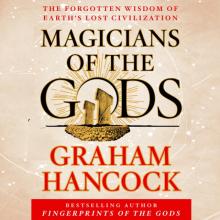 Magicians of the Gods: The Forgotten Wisdom of Earth's Lost Civilization
Magicians of the Gods: The Forgotten Wisdom of Earth's Lost Civilization War God
War God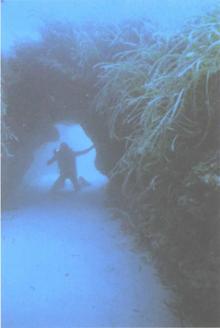 Underworld
Underworld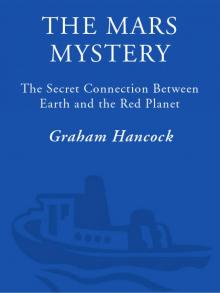 The Mars Mystery
The Mars Mystery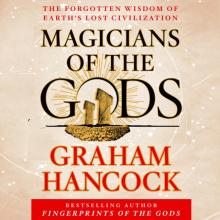 Magicians of the Gods
Magicians of the Gods The Master Game
The Master Game